Let's talk about calcium ions
The calcium ions are really important for our cells. A lot of drugs enter into our cells when their molecules make some interaction with calcium ions. We can say that calcium ions are making our cells active. If the love is the reason for people to do things, we can say the ions of calcium are the reason for our cells to work. The main researches were done during 1990 and since that time we are able to say that we know a lot about mechanisms in our cells and ions of calcium are one of the most important elements of those mechanisms.

The intercellular level of calcium
Scientists discovered that calcium is important for cells when Singer Ringera found out that water from sink can maintain contractions of the heart from the frog much longer than distilled water. The key was in calcium. But calcium is not important only for the natural functions of our body. It's also important when we are sick because a lot of drugs affect our organism through free intracellular concentration of calcium. I will explain those mechanisms and describe the ways in which calcium ions control the functions of our cells.
Calcium ions are mostly situated inside of cell's organelles, especially inside of mitochondria and endoplasmic reticulum (ER) or sarcoplasmic reticulum (SR). The level of free calcium ions is really low (something around 10-7 mol/l). Inside of extracellular fluid, the concentration of calcium ions is something around 2,4 mmol/l. Our organism has three methods to regulate the level of calcium.
1. Mechanisms of calcium entry;
2. Mechanisms of calcium exit;
3. Exchange of calcium ions between cistules and intracellular depot.
Calcium can enter inside our cells through plasma membrane in various ways. For this, the type of calcium channel is the most important. We are talking about three types of calcium channels:
1. Ligand-gated calcium channels or receptor-operated channels (they depend on ligand binding);
2. Voltage-gated channels (they depend on voltage change);
3. Store-operated calcium channels, SOC (they are activated by the discharge of the calcium depot).
Besides this, one of the mechanisms is a sodium-calcium exchange.
Ligand-gated calcium channels
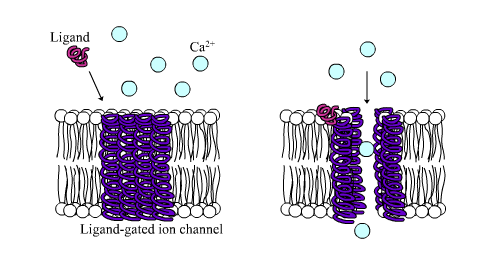
The ligand-gated cation channels are mostly non-selective. That means that different kinds of cations can go through those channels. The same case happens with calcium ions. They can easily go through. The most important is glutamate receptor called the N-methyl-D-aspartate receptor (or NMDA receptor). It has a high permeability for calcium ions. If this receptor is active, the concentration of calcium ions inside of neurons is high. This can even cause the death of the cell, probably because calcium ions can activate Ca-dependable protease. This process is called excitotoxicity. Scientists believe that this process is taking the main place in some of the most difficult neurodegenerative disorders.
Voltage-gated channels
Voltage channels are highly sensitive for calcium ions. They don’t provide ions of potassium and sodium, but they can help calcium ions to enter in our cells through the membrane when it is depolarized. For example, the membrane is depolarized after the action potential goes through it. There are five types of voltage channels: L (long-lasting), T (transient), N (neither long-lasting nor transient), P and R. L-channels are responsible for regulation of heart contractions or contractions of other smooth muscles. N-channels are important for the release of neurotransmitters and hormones. T-channels allow calcium ions to enter inside of neurons. Other types of channels have similar functions as well.
Store-operated calcium channels
In case that depot of calcium ions inside endoplasmic reticulum is empty, calcium ions will enter inside the cell through store-operated calcium channels. Scientists still cannot find out in which way those channels are related with endoplasmic reticulum in our cells.
Mechanisms of removing calcium from our cells
We saw how calcium can enter inside our cells and how its concentration becomes high. Our organism has its ways to reduce the level of calcium as well. This process depends on one enzyme. We called it Calcium-dependable ATPase. Calcium goes out of the cell and in its place comes sodium. This process is known as Calcium-Sodium exchange.
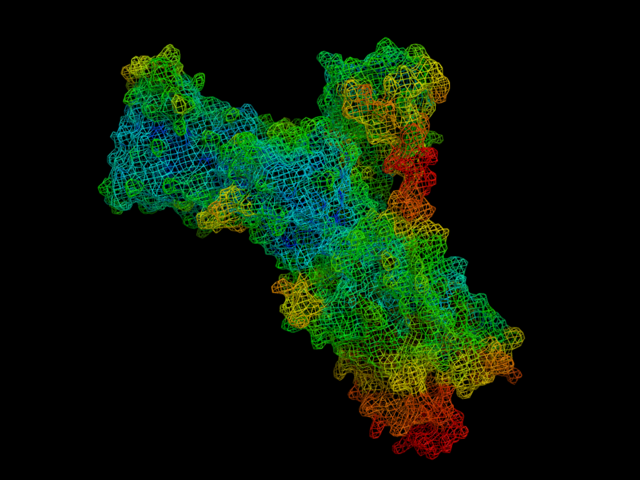
How is calcium released from the depot?
There are two types of calcium channels that allow calcium release from the depot. First one is a receptor for inositol trisphosphate and the second one is a receptor for ryanodine. Both of the channels are very sensitive on calcium ions and they are opening faster if the concentration of calcium is high. That means this process is regenerative and after the first initial release of calcium ions, there will be some more release. This is described as releasing in waves.
Calmodulin (CaM)
Calcium controls a lot of cell functions because it regulates the activity of different proteins, as enzymes, channels, transporters, transcription factors (TF). In most cases, calcium ion is binding to the protein which has a role of intermediate between calcium and functional protein. There are different proteins which have this role, and one of the most important is calmodulin. Calmodulin can regulate almost 40 different types of functional proteins and each molecule of calmodulin has four spots for calcium binding.
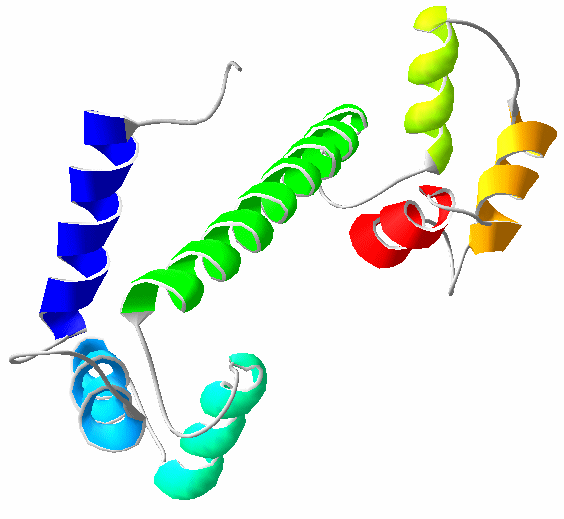
Important cell mechanism: Excitation
Now we will talk about excitation. If the cell membrane becomes depolarized, this will make a regenerative electric response that we called action potential. This can often be seen in neurons and muscle cells. If you are wondering why this action potential is important, I will give you just one example. Creatures that have a big body can move faster because of this electric response in neurons and muscles.
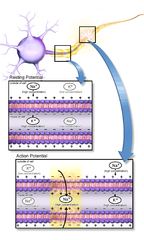.png)
Action Potential in Neuron;Wikimedia commonsBruce BlausCC BY 3.0
Two processes can make action potential in their own interaction. Now it’s time to talk about other ions – potassium and sodium. The first process is a fast increase in permeability for sodium ions and the second one is a slower increase in permeability for potassium ions. The concentrations of sodium and potassium on the two sides of the membrane are not equal. Increase in permeability for sodium causes electric stream towards the inside of the cell, and in another side, high permeability for potassium ions causes electric stream towards the outside of the cell. Potassium and sodium channels were discovered 50 years ago, and after them, scientists discovered calcium channels, which are also important for generating the action potential, especially inside of heart or other smooth muscles.
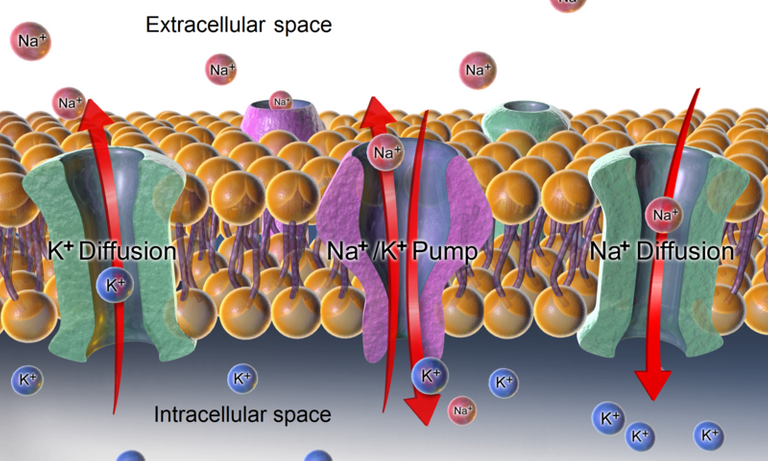
Potassium channels are very important for cell functions. They have one of the main roles in different processes. Researches confirmed many different types of those channels and their importance for our body can be seen in the cases when a person has some kind of disorder in their function. For example, this can cause disorder in heart functions, neurological disorders and other. Even deafness or epilepsy can be caused by disorders in functions of potassium channels.

We saw how the small pieces of our body can affect our whole organism. It is also important to say that many medicines are made to affect those spots in our body and to stop some disorders. Because of that, the researches in this area are really important.
Thanks for reading. I will appreciate your comments.


References:
Humphrey P. Rang, Maureen M. Dale, James M. Ritter, Philip K. Moore, Pharmacology, Novi Sad, 2005;
Bruce Alberts; Alexander Johnson; Julian Lewis; Martin Raff; Keith Roberts; Peter Walter, Molecular Biology of the Cell, New York: Garlard Science, 2012;
McDowall, Jennifer, "Calmodulin". InterPro Protein Archive.
Hodgkin AL, Huxley AF, "A quantitative description of membrane current and its application to conduction and excitation in nerve", The Journal of Physiology, 117 (4): 500–544, 1952.

I liked how you explained the complex calcium biology in such simple language. Well written. Thanks for sharing.
Thank you so much for your comment and for reading. I am trying to explain things in the way that is understandable to everybody.
This type of material usually takes several college lectures to adequately cover. Nice job getting through everything.
Thank you so much for reading and commenting. I really wanted to cover main things, but still, there is a lot to be explained.
Amazing article <3 I love this so much, I feel smarter a bit after I read it :)
Thanks @veryspider. It's really amazing what is happening in our body every second and we don't even realize that.
Congratulations! Your post has been selected as a daily Steemit truffle! It is listed on rank 7 of all contributions awarded today. You can find the TOP DAILY TRUFFLE PICKS HERE.
I upvoted your contribution because to my mind your post is at least 6 SBD worth and should receive 111 votes. It's now up to the lovely Steemit community to make this come true.
I am
TrufflePig, an Artificial Intelligence Bot that helps minnows and content curators using Machine Learning. If you are curious how I select content, you can find an explanation here!Have a nice day and sincerely yours,

TrufflePigThis post has been voted on by the SteemSTEM curation team and voting trail in collaboration with @utopian-io and @curie.
If you appreciate the work we are doing then consider voting all three projects for witness by selecting stem.witness, utopian-io and curie!
For additional information please join us on the SteemSTEM discord and to get to know the rest of the community!
Hi @anasav!
Your post was upvoted by Utopian.io in cooperation with @steemstem - supporting knowledge, innovation and technological advancement on the Steem Blockchain.
Contribute to Open Source with utopian.io
Learn how to contribute on our website and join the new open source economy.
Want to chat? Join the Utopian Community on Discord https://discord.gg/h52nFrV